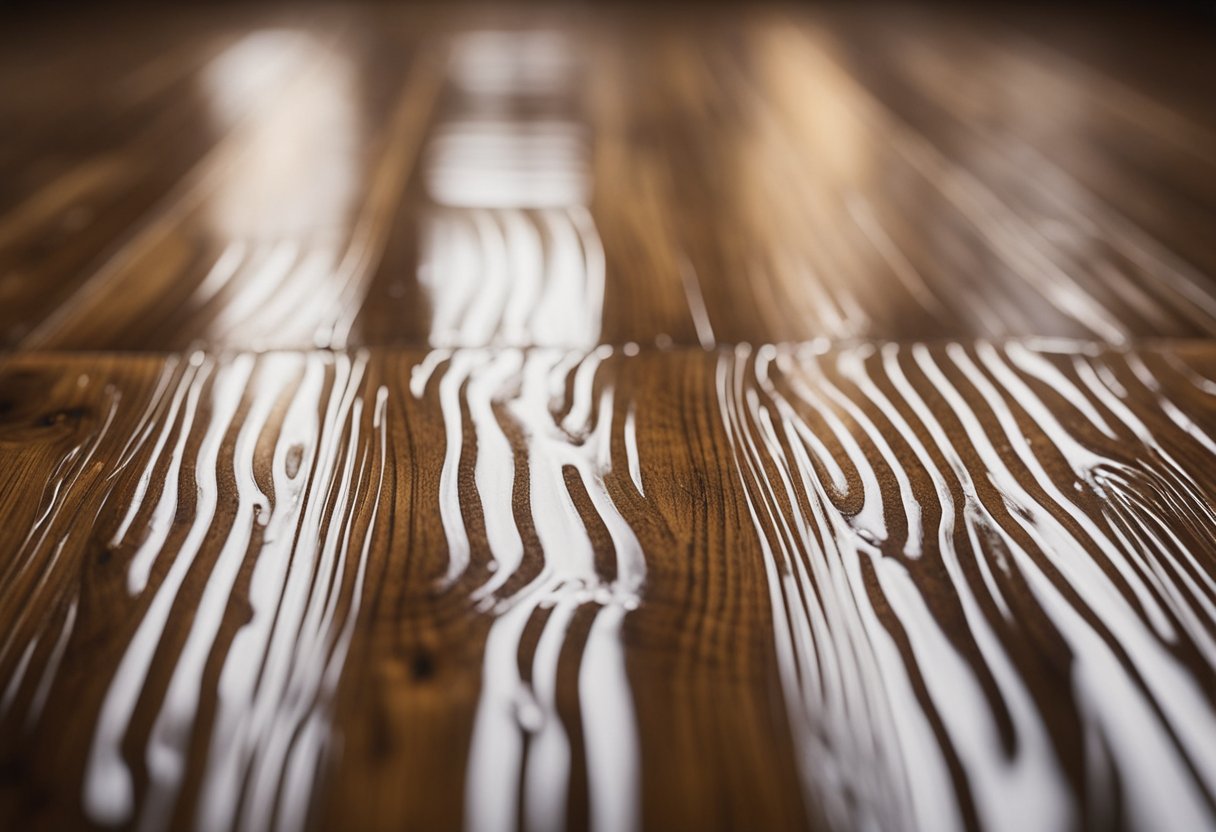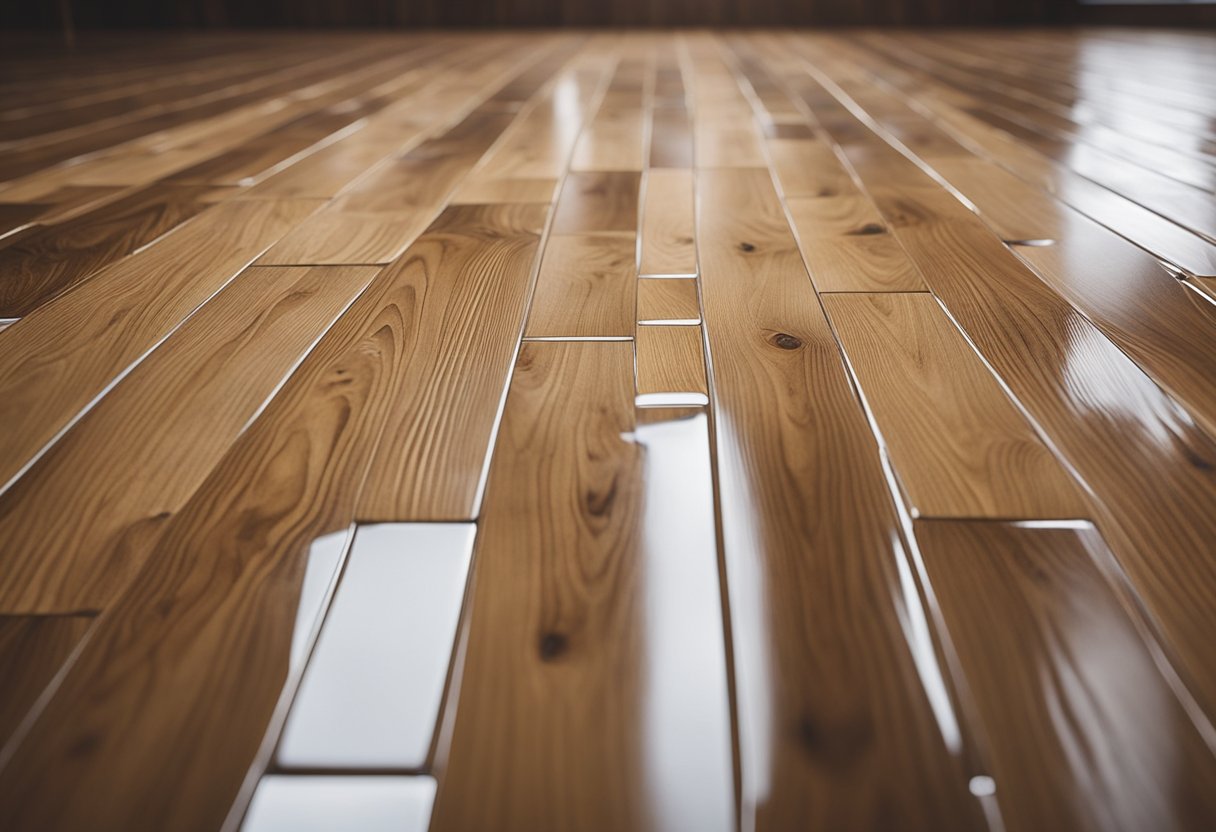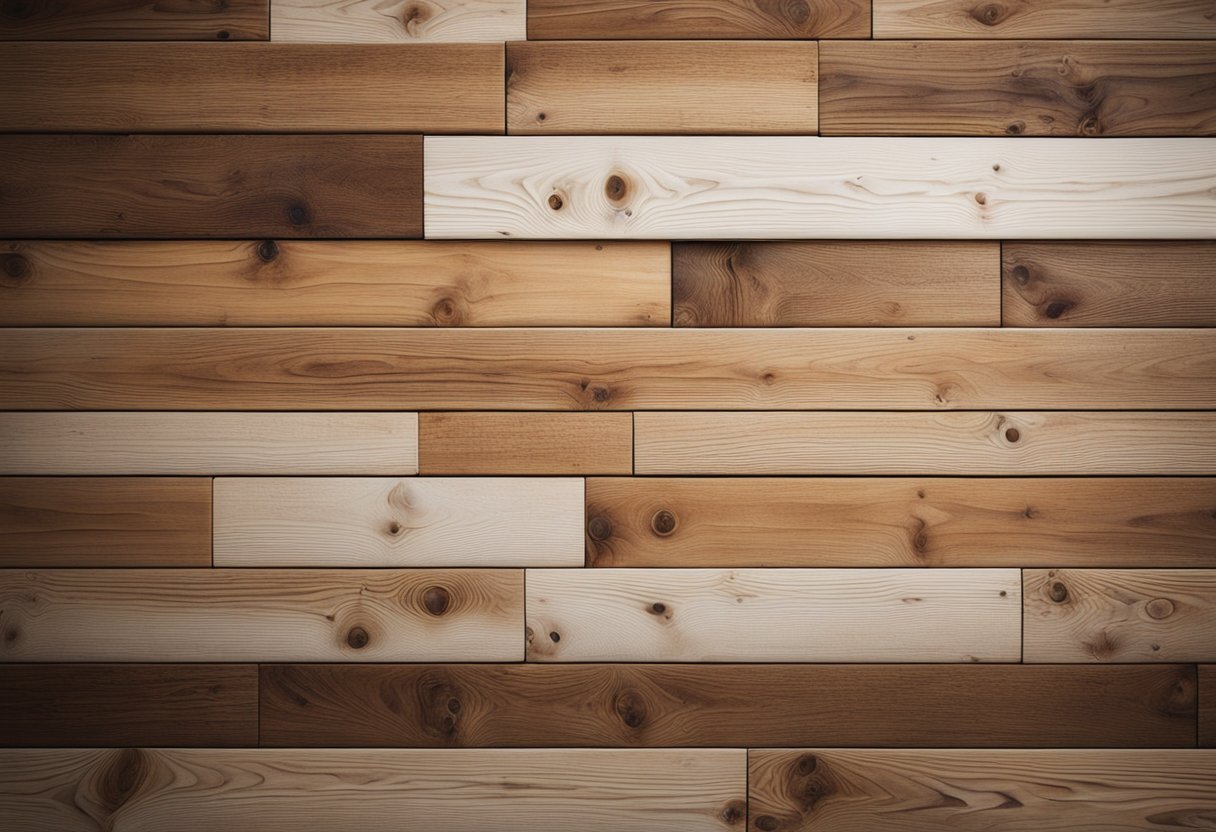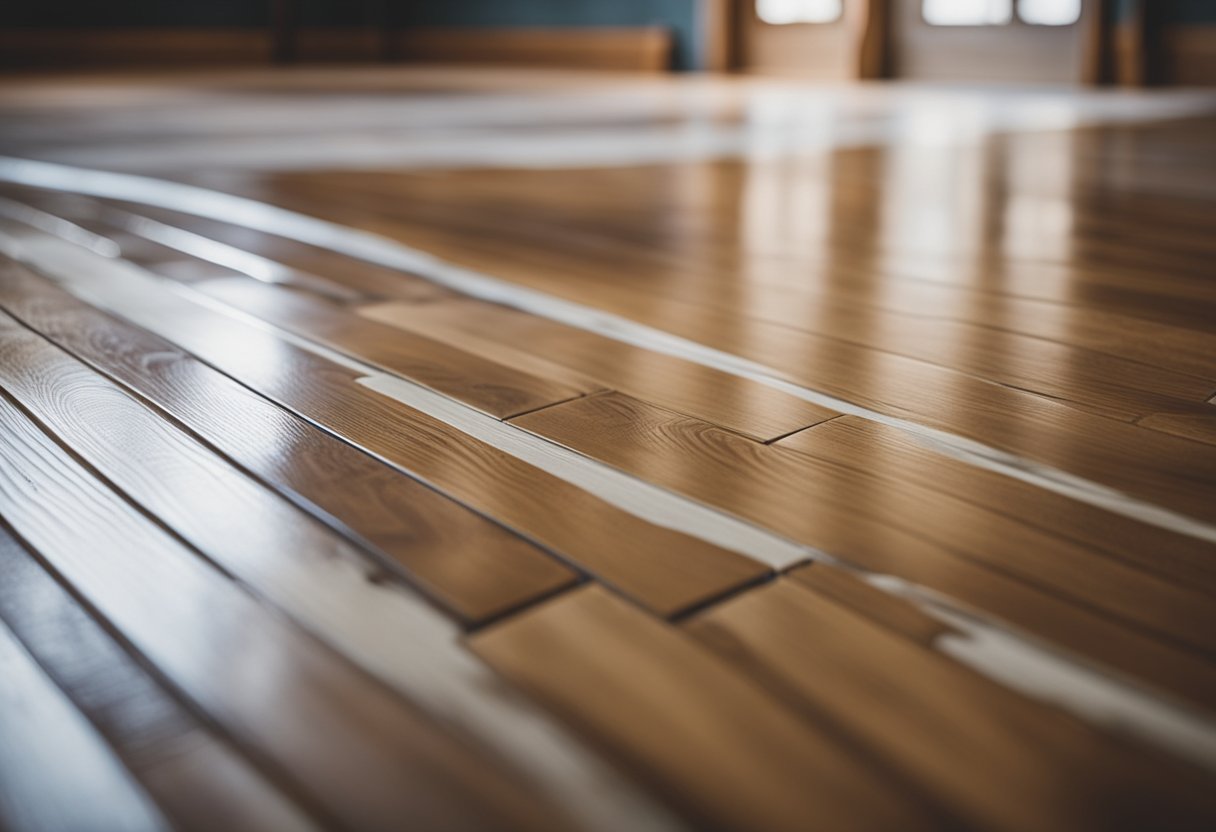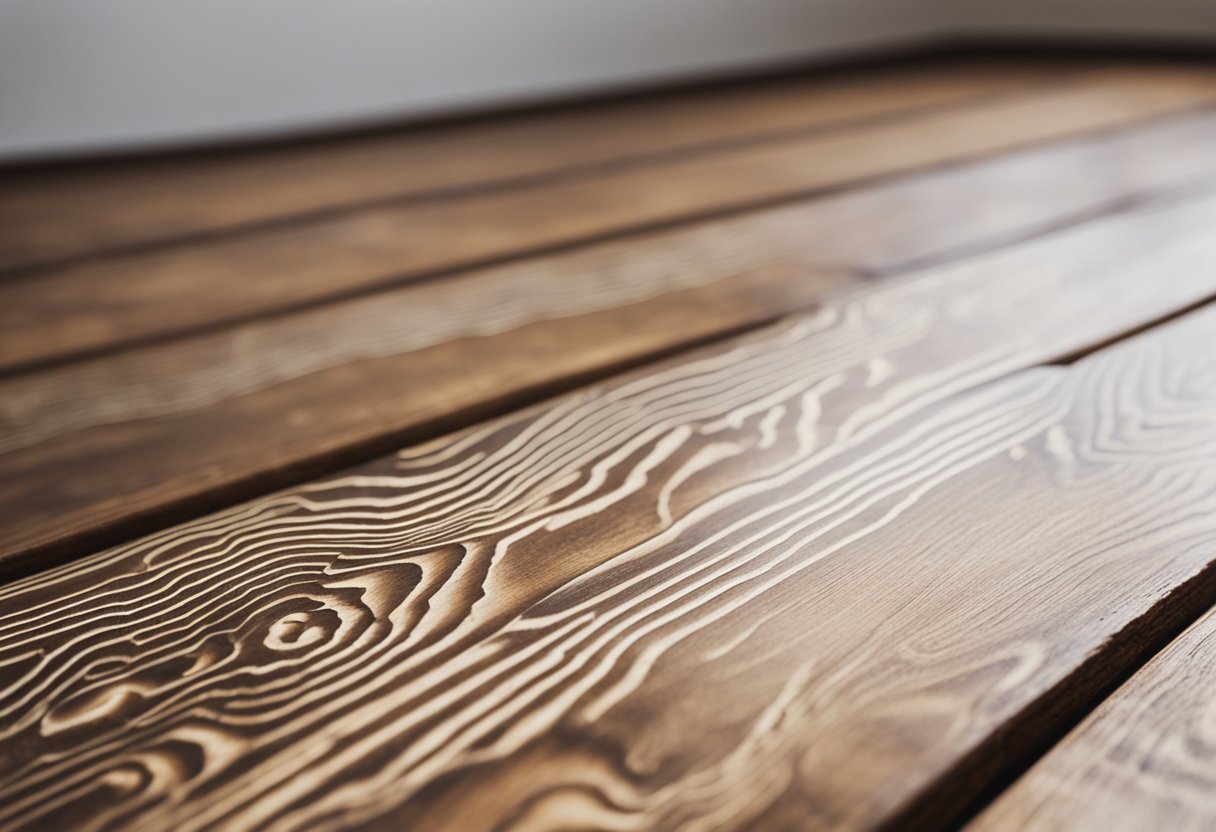White spots on wood floors after polyurethane can be frustrating and unsightly. These spots can be caused by a variety of factors, including moisture buildup, improper sanding, and inadequate mixing of the polyurethane. In this article, I will provide an overview of the problem of white spots on wood floors, including the causes of these spots and how to prevent them. I will also discuss cleaning techniques for white spots and how to remove them using household items. Finally, I will cover refinishing and repairing damaged wood floors.
Understanding the Problem of White Spots
White spots on wood floors can be caused by a variety of factors, including moisture buildup, inadequate mixing of the polyurethane, and improper sanding. These spots can be unsightly and can detract from the beauty of your wood floors. In order to properly address the problem of white spots, it is important to understand the underlying causes of these spots.
Causes of White Spots on Wood Floors
There are several factors that can contribute to the development of white spots on wood floors. These include moisture buildup, inadequate mixing of the polyurethane, and improper sanding. In order to prevent the development of white spots, it is important to take steps to address these underlying causes. By taking the time to properly prepare your floors before applying polyurethane, you can help ensure that your floors remain beautiful and free of unsightly white spots.
Key Takeaways
- White spots on wood floors can be caused by moisture buildup, inadequate mixing of the polyurethane, and improper sanding.
- To prevent white spots, it is important to properly prepare your floors before applying polyurethane.
- Cleaning techniques for white spots include using household items like vinegar and baking soda, while refinishing and repairing damaged floors may require professional assistance.
Understanding the Problem of White Spots
https://www.youtube.com/watch?v=0Vyz8y5e5Qw&embed=true
As a professional in the flooring industry, I have seen many cases of white spots on wood floors after polyurethane application. These spots can be unsightly and frustrating, especially after putting in the time and effort to refinish the floor.
White spots are generally caused by a buildup of moisture, which can be formed due to various reasons. One common cause is water spills left on hardwood floors, which can cause white spots once it evaporates. Another reason can be due to not stirring the polyurethane thoroughly enough before applying it.
It is important to note that these spots are not always permanent and can be fixed with the right techniques. However, it is always better to prevent them from happening in the first place.
To prevent white spots, it is crucial to ensure the wood floor is completely dry before applying polyurethane. This can be done by using a moisture meter to check the moisture content of the wood. If the moisture content is too high, it is best to wait until the wood is completely dry before applying polyurethane.
In addition, it is important to stir the polyurethane thoroughly before applying it to ensure an even distribution of the product. Using a high-quality brush or roller can also help prevent white spots by ensuring a smooth and even application.
In summary, white spots on wood floors after polyurethane application can be a frustrating problem, but it is not always permanent. By understanding the causes of white spots and taking preventative measures, such as ensuring the wood is completely dry and stirring the polyurethane thoroughly, you can avoid this issue and achieve a beautiful, even finish.
Causes of White Spots on Wood Floors
As a professional in the flooring industry, I have come across many cases of white spots on wood floors after polyurethane. White spots on wood floors can be a frustrating sight for homeowners, and it is essential to understand the causes of these spots to prevent them from occurring in the future.
Moisture Damage
One of the most common causes of white spots on wood floors is moisture damage. This is often due to water leaks or floods. When water penetrates the wood, it can cause the wood to swell, and the finish to bubble or peel off. As a result, white spots can appear on the surface of the wood. To prevent moisture damage, it is essential to ensure that the wood is properly sealed and to address any water leaks or floods immediately.
Heat Damage
Heat can also cause white spots on wood floors. For example, placing a hot pan or pizza box directly on the wood can cause the finish to discolor, resulting in white spots. To prevent heat damage, it is essential to use coasters or trivets when placing hot items on the wood.
Scratches and Damage
Scratches and other damage to the wood can also cause white spots to appear. When the finish is scratched or damaged, it can allow moisture or other substances to penetrate the wood, resulting in white spots. To prevent scratches and damage, it is essential to avoid dragging furniture or other heavy objects across the wood and to address any damage immediately.
Spills
Spills can also cause white spots on wood floors. When liquids are not cleaned up immediately, they can penetrate the wood, causing discoloration and white spots. To prevent spills from causing damage, it is essential to clean up any spills immediately and to avoid using harsh chemicals or abrasive cleaners on the wood.
Mold
Finally, mold can also cause white spots on wood floors. When mold grows on the surface of the wood, it can cause discoloration and white spots. To prevent mold from growing on wood floors, it is essential to ensure that the wood is properly sealed and to address any moisture issues immediately.
Preventing White Spots on Wood Floors
As someone who has dealt with white spots on wood floors after polyurethane, I know how frustrating it can be to see your beautiful floors marred by unsightly blemishes. Fortunately, there are steps you can take to prevent white spots from appearing on your wood floors.
One of the most important things you can do is to be careful with furniture and other objects that come into contact with your floors. Avoid dragging heavy objects across the floor, as this can scratch the surface and make it more susceptible to white spots. Instead, lift furniture and other items and place them gently on the floor.
Another way to prevent white spots is to avoid using wax or other products that can leave a residue on the floor. This residue can attract moisture and cause white spots to form. Instead, stick to cleaning products that are specifically designed for use on wood floors.
It’s also important to apply multiple coats of polyurethane to your floors. This will provide an extra layer of protection and make it harder for white spots to form. Be sure to follow the manufacturer’s instructions carefully when applying polyurethane, and allow each coat to dry completely before applying the next one.
If you’re using a water-based polyurethane, be extra careful to avoid getting water on the floor during the drying process. Water can cause white spots to form, so make sure to keep the floor as dry as possible until the polyurethane has fully cured.
Finally, be sure to take extra care when maintaining your wood floors. Regular cleaning and maintenance can help prevent white spots from forming. Use a soft, damp cloth to clean the floors, and avoid using harsh chemicals or abrasive cleaners that can damage the surface.
By following these tips and taking extra care with your wood floors, you can help prevent white spots from forming and keep your floors looking beautiful for years to come.
Identifying the Type of Stain
https://www.youtube.com/watch?v=rIkXprCfXcc&embed=true
When it comes to white spots on wood floor after polyurethane, the first step is to identify the type of stain. This is important because different types of stains require different methods of removal. Here are some common types of stains and how to identify them:
-
Water Stains: Water stains are caused by moisture penetrating the finish of the wood. They can be identified by their circular shape and light color. Water stains are usually easy to remove with a simple solution of vinegar and water.
-
Oil Stains: Oil stains are caused by oil-based substances such as cooking oil, lotion, or grease. They can be identified by their dark color and greasy texture. Oil stains can be removed with a mixture of baking soda and water.
-
Salt Stains: Salt stains are caused by salt or other minerals that have been tracked onto the floor. They can be identified by their white, powdery appearance. Salt stains can be removed with a mixture of water and vinegar.
-
Alcohol Stains: Alcohol stains are caused by spills of alcoholic beverages such as wine or beer. They can be identified by their dark color and sticky texture. Alcohol stains can be removed with a mixture of warm water and dish soap.
-
Medicine Stains: Medicine stains are caused by spills of medicine such as cough syrup or liquid pain relievers. They can be identified by their dark color and sticky texture. Medicine stains can be removed with a mixture of warm water and dish soap.
-
Residue Marks: Residue marks are caused by the buildup of cleaning products or other substances on the floor. They can be identified by their hazy appearance. Residue marks can be removed with a mixture of warm water and vinegar.
It’s important to note that some stains may require professional help to remove. If you’re unsure about the type of stain or how to remove it, it’s best to consult with a professional before attempting to clean it yourself.
Cleaning Techniques for White Spots
https://www.youtube.com/watch?v=KJT4SGoyOuU&embed=true
As a professional in the wood floor industry, I have come across many cases of white spots on wood floors after polyurethane application. These spots can be caused by moisture, spills, or even cleaning products. If you are dealing with white spots on your wood floor, you don’t have to worry. There are several cleaning techniques you can use to get rid of them.
One of the most effective cleaning techniques for white spots on wood floors is using vinegar. Vinegar is a natural cleaning product that is readily available in most households. To use vinegar, mix equal parts of water and vinegar in a spray bottle. Spray the mixture on the white spot and let it sit for a few minutes. After that, wipe the spot with a clean cloth. If the white spot is still visible, repeat the process until it disappears.
Another effective cleaning technique for white spots on wood floors is using baking soda. Baking soda is a natural abrasive that can help remove stains and dirt from wood floors. To use baking soda, mix it with water to form a paste. Apply the paste on the white spot and let it sit for a few minutes. After that, wipe the spot with a damp cloth. If the white spot is still visible, repeat the process until it disappears.
You can also use commercial wood floor cleaners to remove white spots on wood floors. These cleaners are specifically designed to clean and protect wood floors. However, it is important to choose a cleaner that is safe for your wood floor. Before using any cleaner, read the label to ensure that it is safe for your wood floor.
In conclusion, there are several cleaning techniques you can use to remove white spots on wood floors. These techniques include using vinegar, baking soda, and commercial wood floor cleaners. However, it is important to use the right technique and cleaning product to avoid damaging your wood floor.
Removing White Spots Using Household Items
https://www.youtube.com/watch?v=naOg7LR9jcU&embed=true
If you notice white spots on your wood floor after polyurethane, don’t panic. There are several household items that you can use to remove them. Here are some of the most effective methods:
Mayonnaise
Mayonnaise is a common household item that can be used to remove white spots on wood floors. Apply a small amount of mayonnaise to the affected area and let it sit for a few hours. Then, wipe it off with a clean cloth. The oil in the mayonnaise will help to remove the white spots.
Mineral Spirits
Mineral spirits can also be used to remove white spots on wood floors. Simply apply a small amount of mineral spirits to a clean cloth and rub it on the affected area. Be sure to use a non-abrasive cloth to avoid damaging the finish on your wood floor. Once you have rubbed the area, wipe it clean with a damp cloth.
Hydrogen Peroxide
Hydrogen peroxide is another household item that can be used to remove white spots on wood floors. Mix equal parts of hydrogen peroxide and water in a spray bottle. Spray the mixture on the affected area and let it sit for a few minutes. Then, wipe it off with a clean cloth. Hydrogen peroxide can be harsh on some finishes, so test it on a small, inconspicuous area first.
Toothpaste
Toothpaste is another household item that can be used to remove white spots on wood floors. Apply a small amount of toothpaste to the affected area and rub it in gently with a damp cloth. Then, wipe it off with a clean, damp cloth. Toothpaste can be abrasive, so be sure to use a gentle touch when applying it to your wood floor.
Using these household items can help you to remove white spots on your wood floor after polyurethane. However, if the spots are particularly stubborn, it may be best to seek the assistance of a professional.
Refinishing the Wood Floor
https://www.youtube.com/watch?v=CwhlfRfoOyk&embed=true
When dealing with white spots on a wood floor after polyurethane, refinishing the floor may be necessary. Refinishing involves sanding down the existing finish and applying a new coat of polyurethane.
Before starting the refinishing process, it is important to ensure that the floor is clean and free of debris. Use a broom and vacuum to remove any dust or dirt from the surface of the floor. If there are any gaps or holes in the wood, fill them with wood filler and let it dry completely before proceeding.
Next, use a floor sander to sand down the existing polyurethane finish. It is recommended to use a coarse grit sandpaper, such as 36 grit, for the initial sanding. After the initial sanding, use a finer grit sandpaper, such as 80 grit, to smooth out the surface of the wood. Be sure to sand in the direction of the grain to avoid damaging the wood.
After sanding, use steel wool to remove any remaining debris and to smooth out the surface of the wood. It is important to remove all dust and debris before applying a new coat of polyurethane.
When applying the new coat of polyurethane, it is important to follow the manufacturer’s instructions for application. Use a brush or roller to apply the polyurethane in thin, even coats. Allow each coat to dry completely before applying the next coat.
In conclusion, refinishing a wood floor after polyurethane is a process that requires careful attention to detail. By following the steps outlined above, you can achieve a beautiful, smooth finish on your wood floor.
Repairing Damaged Wood Floors
If your wood floors have been damaged by white spots after polyurethane, don’t worry, there are ways to repair them. In this section, I will cover some of the most effective methods for fixing white spots on wood floors.
Sand the Damaged Area
The first step to repairing damaged wood floors is to sand the affected area. Use a fine-grit sandpaper to gently sand the area until the white spot is no longer visible. Be careful not to sand too much, as this can damage the wood further.
Apply a Thick Coat of Polyurethane
After sanding, apply a thick coat of polyurethane to the damaged area. This will help to seal the wood and protect it from further damage. Be sure to use the same type of polyurethane that was used on the rest of the floor for a consistent finish.
Use a Furniture Marker
If the white spot is still visible after sanding and applying a thick coat of polyurethane, try using a furniture marker. Choose a marker that matches the color of your wood floor and carefully color in the white spot. This can help to hide the spot and make it less noticeable.
Consider Using a Wood Floor Repair Kit
If the damage to your wood floor is more severe, consider using a wood floor repair kit. These kits typically include everything you need to repair damaged wood floors, including wood filler, sandpaper, and stain. Follow the instructions carefully for the best results.
By following these tips, you can effectively repair white spots on your wood floors after polyurethane. Remember to take your time and be patient, as repairing damaged wood floors can be a time-consuming process.
Frequently Asked Questions
How can I fix white spots on my wood floor after polyurethane application?
If you notice white spots on your wood floor after applying polyurethane, there are a few things you can do to fix them. First, try sanding the affected area with a fine-grit sandpaper. If the white spots are still visible, you may need to apply a new coat of polyurethane. Be sure to follow the manufacturer’s instructions and allow the polyurethane to dry completely before walking on the floor.
What causes white spots to appear on hardwood floors after polyurethane?
White spots on hardwood floors after polyurethane application can be caused by a few different factors. One common cause is moisture trapped under the polyurethane. Another cause is using a stain that contains mineral oil, which can prevent the polyurethane from adhering properly. To prevent white spots from appearing, be sure to follow the manufacturer’s instructions and allow each coat of polyurethane to dry completely before applying the next.
Is it normal for polyurethane to appear white in the can?
Yes, it is normal for polyurethane to appear white in the can. Polyurethane is a milky liquid that dries clear. Be sure to stir the polyurethane thoroughly before applying it to ensure an even finish.
How do I remove excess polyurethane from my wood floor?
If you have excess polyurethane on your wood floor, you can remove it with a scraper or sandpaper. Be sure to sand with the grain of the wood to avoid damaging the surface. If you are having trouble removing the excess polyurethane, you may need to use a chemical stripper. Be sure to follow the manufacturer’s instructions and wear protective clothing and eyewear.
What can I do about uneven sheen on my polyurethane finish?
If you have an uneven sheen on your polyurethane finish, you can try buffing the surface with a fine-grit sandpaper or steel wool. Be sure to buff with the grain of the wood to avoid damaging the surface. If the uneven sheen is still visible, you may need to apply a new coat of polyurethane.
What is the best way to fix a blotchy polyurethane finish on my wood floor?
If you have a blotchy polyurethane finish on your wood floor, you can try sanding the surface with a fine-grit sandpaper and applying a new coat of polyurethane. Be sure to follow the manufacturer’s instructions and allow the polyurethane to dry completely before walking on the floor. If the blotchy finish is still visible, you may need to strip the entire floor and start over.

Hi, I’m Sal Muller of Tooltrip.com. My DIY experience led me to understand essential power tools for home projects. Tooltrip.com guides enthusiasts and professionals in choosing right tools for any job. I provide concise top tool reviews for easier, efficient DIY.

